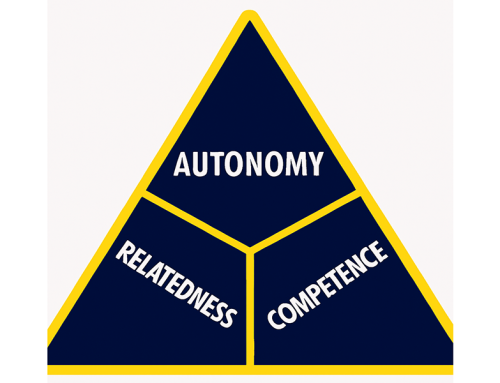Goal setting strategies have been formally researched by psychologists since at least the 1960’s. More than 1000 studies have confirmed that goal setting is one of the most effective techniques you can use for motivation and achievement in sports, fitness, business and personal life. But you have to set, think about and pursue your goals the right way. When you do, you can literally triple your goal achievement success rate.

Much has been said about goals already, so why keep writing more about it? One reason is because despite their critical importance, most people still don’t set properly written goals.
It was in 1956 that Earl Nightingale, father of the personal development industry, recorded his famous “Strangest Secret” audio. In that lecture, the first spoken word recording to ever achieve a gold record, Earl said that only 5% of people achieve success, and the reason is because they are not working toward a worthy goal that they have chosen.
Unfortunately, those numbers don’t seem to have changed. Because human nature is what it is, they may not ever change, but the good news is, you can make a decision to be a part of that 5%.
A second reason is because it’s not self-evident how to set goals most effectively. Simple and popular formulas like S.M.A.R.T. (specific, measurable, attainable, relevant and time bound) have been around for years and give you a good starting point.
Making goals specific is especially important and well supported in the research. Lack of clarity is a major cause of failure.
However, S.M.A.R.T. goals are already common knowledge, plus this formula is not entirely comprehensive. It doesn’t cover all the finer details and newest research findings that make a big difference in your success rate, especially when goals are challenging and the path is fraught with obstacles.
That’s why I’d like to go over 10 of the top goal setting tips supported by psychology, which are not part of the S.M.A.R.T. formula. Some of these are also not intuitive, or may even be the opposite of what many people believe, which is why many of them are overlooked or ignored.
1. Set big goals that challenge you
In my book Burn the Fat, Feed the Muscle, one of the first things I wrote in the chapter on how to set goals was “Set big goals. Puny goals are not motivating.” I added, “It’s ok if your goal scares you a little. In fact, if your goal isn’t scary and exciting at the same time, your goal is too small.”
In countless psychology studies over many decades, it’s been unanimously confirmed that specific, challenging goals produce superior performance than goals that are vague or set too low.
The common concern you hear about big goals is that setting the bar too high could set yourself up for disappointment if you fail. That’s understandable, but it doesn’t seem to happen. As long as the goal is clearly defined and as long as it’s possible, then most people rise to the occasion when they are challenged to do so. Furthermore, if you fall short, you can simply extend your deadline, but keep the goal (“write your goals in ink and your deadlines in pencil.”)
People who set big goals work harder, focus better and persist longer. Achieving a difficult goal is also more satisfying and makes you happier. Setting small sub-goals that are stepping stones to a big goal is a smart strategy, but scaling back from the big goal you really wanted to a smaller, easier goal and achieving it is nothing to feel great about.
2. Accept that it’s going to be difficult
If you accept the challenge of setting and pursuing big goals, then you have to accept that it’s going to be hard. Great achievements do not come easy.
Out of all the research-based goal setting tips, I believe that this one has the biggest impact for fitness goals. We are bombarded with claims about how quickly and easily we can lose fat, build muscle or solve a health problem, if only we buy the trendiest supplement, equipment or program.
The truth is, pursuing any of this quick fix nonsense will undermine your success and erode your character. Don’t buy the hype. You know deep in your heart that getting in shape and staying in shape is not easy. If it were, everyone would have muscles and six pack abs.
If you expect it to be hard work, then you’re going to work harder, it’s that simple. Having difficult goals also makes you persist longer because you expect it to take time. Anticipating obstacles leads to better preparation and contingency planning.
People who think it’s going to be easy simply aren’t ready when the going gets tough. They give up more easily, and they’re more likely to get down on themselves when their goals aren’t realized.
Expecting it to be hard and expecting to hit obstacles might appear to be negative thinking, but it’s more accurate to call it realistic optimism. You’re optimistic because you believe you’ll reach your goal, but you’re realistic about the work it will take to get there.
3. Set goals to become better than you used to be
Let’s face it, many people want to win. Many people want to be the best. In sports and in many businesses, winning is the bottom line and will always be pursued. However, sometimes the best strategy is not focusing on winning, but on becoming better. Winning is often the welcome side effect.
It’s not that you should never set goals for a specific outcome, you simply need to know that there are potential pitfalls if your goal is always winning or being the best.
Goals to win can be highly motivating but also a double-edged sword because many people tie their performance into their self worth. A goal only to win doesn’t recognize or reward incremental progress; if you didn’t win, you lost, and the outcome is not even always in your control. In physique and bodybuilding competitions, for example, who wins is subjective and in the hands of the judges.
The most important thing is to adopt a growth mindset and focus on getting better. Psychologists refer to the desire to get better as “mastery goals.” With these “become better” goals, you don’t get down on yourself when you miss one specific goal and you judge yourself based on progress made toward the goal. That’s how it’s possible to fall short of a target and still feel good about yourself.
With “become better” goals, you don’t get as discouraged, you tend to persist longer without giving up and you don’t attach one outcome to your identity or self worth. Goals to become better are about the journey and that also it makes the pursuit more fun and enjoyable.
The best part about pursuing self-improvement is that everyone can improve. Absolutely everyone.
4. Set up if-then scenarios that trigger goal pursuit or prepare you for positive action when the going gets difficult
Peter Gollwitzer, a professor of psychology at NYU, found an easy way to triple your chance of success: Create if-then scenarios by setting up triggers for action in your environment or brainstorming obstacles and difficulties that have derailed you in the past and using them as action triggers. Gollwitzer calls these “implementation intentions.”
Here’s the format for an implementation intention:
If/when I encounter a certain situation (a visual cue, a person or a thought), I will do this (act a certain way, say something, think something) so I can achieve my goal.
An environmental trigger might be something like this: Instead of putting the oatmeal container in the cupboard, leave it on the kitchen table in plain sight and write out this intention on paper:
“When I see the oatmeal in the morning I will eat a healthy breakfast with the correct amount of calories, protein, carbs and fat, to start the day right.”
Here’s another:
“When I see my running shoes on the chair in the morning, I immediately get on my workout clothes, put on my shoes and go for my run, even if I still feel tired. I’ll wake up fast once I’m moving and my blood starts flowing.”
If you encounter a challenge or obstacle that used to hold you back, an implementation intention might look like this:
“If I get a craving for sugar, then I will grab fruit like an apple, some grapes or a banana, which I always leave in my kitchen or carry with me through the day. This way I’ll stay on track toward my goal and I won’t go hungry either.”
Or:
“If I eat something that wasn’t on my plan, I brush it off and immediately schedule and focus on my next healthy meal. I’m only one meal away from being right back on my plan.”
or
“If I feel the urge to blow off my workout, then I will say to myself, just go to the gym and do a shorter, lighter workout today – just get to the gym now and do something. I might feel better and feel like doing more when I get there.”
Using if-then scenarios is a step beyond basic goal setting that is proven to have an enormous impact on success rates. The best part is, if you do this consistently for a long enough period of time, these behaviors will become habits and you won’t even have to think about them anymore, which saves your mental energy and willpower.
By the way, there has always been some debate about whether affirmations are helpful or not. It probably depends on how you write them. If-then intention statements are one type of “affirmation” that is a sure-fire winner.
5. Set up your environment with triggers to “prime” your subconscious mind for goal pursuit
Your brain is a goal-seeking mechanism that is always pursing something, whether you intentionally set goals or not. One way that goal pursuit is triggered without your conscious awareness is by cues in your environment, and you’d be amazed how many little things can set this off. Almost any cue can be paired with a goal and unconsciously get you acting to move toward that goal. Some psychologists estimate that 80 percent of your day’s activities are your unconscious reactions to these cues.
It might even seem a little creepy at first when you realize how much your behavior is running on autopilot, but you can make this automation work in your favor by intentionally setting up cues in your surroundings that prime your subconscious to pursue what you want. The possibilities are endless, and include sounds, words, people, situations, even smells. Here are a few ideas:
- Leave healthy foods on the kitchen counter
- Tack up motivational posters, signs or vision boards
- Put a motivating image on your desktop or screen saver
- Change your passwords to words and phrases that remind you of your goals
- Include achievement-related words in your email address
- Carry a goal card in your pocket
- Get a vanity license plate with a goal related word or phrase
- Wear hats or t-shirts with positive words or logos
- Strategically place inspiring books in your home and office
- Tape a printout of your healthy meal plan onto your refrigerator
- Put your lifting belt or running shoes where you can see them before workout time.
- Leave fitness magazines in sight around your home and office
- Imprint your coffee mug with a motivational saying
- Re-organize your ipod playlist to include the most uplifting songs
- Change your mobile phone ring tone
- Change your commuting route to drive past the gym
- Or even, if you’re into tattoos, consider very carefully what the next one says or illustrates.
Be sure also, to consider what cues might be having a negative effect. Personally I believe that clutter (seeing piles of papers and so on) in my office has been a trigger to feel overwhelm and anxiety, and when I have a clean office and desk I’m more productive and in a better mood.
6. Surround yourself with people who are goal achievers – they’re “contagious”
In 2007, a study about how obesity spreads through social networks made it into mainstream news and went viral. The findings of that social psychology research was taken as rather depressing by many people who felt their environment and social circles were fixed to a large degree, at least for the near future.
The good news is that other studies have found that goals are also contagious. Seeing other people pursuing a goal is one of the most powerful triggers of unconscious goal pursuit. For example, if everyone at your office is entering a body transformation contest for the New Year, you are more likely to join in.
This is why you should find role models and expose yourself to as many people as possible who are going after goals that you also would like to pursue. For the relief of people who feel they are in a negative social environment at the moment, you don’t even have to know the people you are watching. Studies suggest that even reading biographies of successful people can have a positive impact.
It’s especially helpful to watch and read about people who are pursing the “become better” type of goals mentioned earlier, as opposed to people with a win at all costs mentality.
7. Build your self-control (“willpower”) muscles
Self-control has become a hot topic in recent years, especially after a stream of popular books about willpower were released, including the best-sellers by McGonigal and Baumeister.
A lot of attention has been put on the fact that willpower is a limited resource that can easily become depleted and requires down time to replenish. What has not been emphasized enough is that just like building muscle with training, you can build your willpower by exercising it. No one has “no willpower” and no one is stuck with low levels of willpower.
There are many ways to increase it. Conveniently enough, one of the best ways to build your willpower is to exercise regularly. Making the decision to work out and then doing it builds your willpower muscle right along with your physical muscles.
Any time you set a goal or make a promise to yourself and then keep it by taking action toward it, you are building more self-control. This is most true when you create or seek out an opportunity to do something that you don’t feel like doing, which fits into the plan of achieving your goal.
On the other hand, if you don’t discipline yourself to do that which you don’t want to do, your willpower muscle will shrink, just like your physical muscles atrophy when they’re not trained.
Another tip: All you need to build more willpower is one challenging task to focus on at a time. Don’t attempt to pursue two goals at once if they are major goals that both require large amounts of self control. You would only be tempting fate.
8. Get feedback and self-monitor
Achieving a goal requires that you track your progress so you know how you’re doing at all times. If you don’t “keep score” and self monitor your progress, it’s like flying a plane without a navigation system – you could be off course and not even know it.
Even when you do realize you’re off course, if you don’t know exactly where you are, you won’t know how to adjust your direction to get yourself back on track. At all times you must know both where you are and where you are going.
What do you track and monitor? Everything you want to improve! If you want to achieve an ideal lean body weight, then you measure your weight and body composition. If you want to get stronger and fitter, then you measure your workout performance. If you want to improve your eating habits, then you log in your daily nutrition including calories, protein, carbs and fat.
Research has consistently shown that people who are good at these types of self-monitoring behaviors stick with their programs more and get better results.
If your progress tracking shows that you’re off course, you must never get discouraged. Goal achievers expect to succeed, but they don’t expect the journey to be an easy straight line from point A to point B. When they’re of course, they consider it feedback, not failure and they make the necessary course correction.
In addition, when you get temporarily stuck or off track, never look at it as a lack of ability or as something you can’t change. Instead consider that it might be a lack of necessary effort. Remind yourself that you have the power to change and improve, but you may have to get back to work with a higher level of effort.
If you know you’ve put in the required effort and stuck with your original plan and it still hasn’t produced the results you wanted, then you still don’t get discouraged. That feedback is simply your signal to tweak or change your plan and try some new strategies.
9. Tap into your intrinsic motivations to maintain your achievement and increase happiness
Suppose a fitness contest or weight loss reality show offered $100,000 to the winners. You wouldn’t be surprised to see a group of contestants train and diet harder than they ever have in their life, put in hours of work every day and succeed at such a high level that their before and after photos make your jaw drop.
But the day after the contest is over, most of the contestants have already started to relapse, regain the fat and ultimately end up back at square one.
Why does this happen? It’s because the money, prizes, and recognition won are external motivators, and while these can be powerful incentives, they only motivate in the short term as long as those rewards are there. Long term motivation and goal achievement requires motivation that comes from within.
Fortunately, intrinsic motivation has been well studied and we know how to get it. Just like you have physical needs like food, water and oxygen, we are hard-wired with certain fundamental psychological needs as well. According to Self Determination Theory, all human beings are seeking autonomy, competence and connection.
Autonomy is the need to be free to choose your own goals and do things because you like doing them for their own sake. You find the pursuit of your goals fun, engaging, appealing or they feel congruent with the type of person you are. Autonomy is the freedom to set your own goals, choose your own path and not feel pressured by other people or outside forces.
Competence is about being good at what you’re doing and getting better and better at it. We all want to feel like we are learning, increasing our skill and growing. This basic need for competence and pursuit of mastery drives us, and makes us feel good when we achieve a difficult goal.
Connection is the desire to bond with and relate to other people. Goals that have you interacting with others, giving and receiving help from others and nurturing relationships are going to fill your innate need for connection.
If you set specific, challenging goals of your own choosing, and if the reasons why you want to achieve them include intrinsic motivations, you’ll persist longer, you’ll be more likely to achieve your goals, maintain your results, and enjoy the process more. When you reach those goals, you’ll also feel the most lasting and real type of happiness and satisfaction.
10. Develop Grit
There’s no question that talent or innate ability is a major factor in success especially in physical endeavors like athletics.
However, research shows that the biggest factor in whether someone achieves their goals is not as much innate ability as it is hard work and persistence. Success requires the sustained and focused application of talent over time. Psychologists are now calling this grit.
Grit is passion and perseverance for your long-term goals, and that means maintaining effort and interest for years even if there are difficulties, disappointments and failures. Grit is the type of tenacity and resolve where you clench your teeth and push even harder when the going gets tough.
How do you get grit? We’re not one hundred percent sure why some people have it and other people don’t. Psychologists are diligently researching the topic at this very moment because they know that for long-term success, grit is even more important than talent or IQ. But we do know what grit is and having defined it, we can aspire to emulate it. Here are some of the best ways:
- Write your own goals, be specific and commit to them 100%.
- Pursue your passion, be passionate, and work on growing your passion.
- Think long term. Approach your success like a marathon, not a sprint.
- Don’t get distracted or change goals. Do not be a dabbler. Commit to it and stick to it until you get there.
- Expect obstacles and don’t get discouraged by them. Understand that all setbacks are temporary and you can get through them or go around them.
- When the going gets tough, you get mentally tougher and renew your effort.
- Be willing to make sacrifices and work very hard every day for a very long time. Embrace and appreciate the work.
- Adopt a growth mindset for life – believe that you can always get better.
- Surround yourself with other people who have grit.
Conclusion
I think that unconscious goal pursuit is one of the most fascinating areas of psychology research. Once you realize that your brain is a cybernetic mechanism that is always working on some goal and guiding you automatically toward it, whether you set goals or not, this should light a fire under your butt to take responsibility and conscious control over the process. If you don’t, then rest assured, you are pursuing someone else’s goals.
If you don’t properly set goals, your chances of success are low. The best case scenario is you achieve some success, but you have no idea how you did it and you cannot explain how you succeeded to someone else. It’s almost like you succeeded by accident.
When you understand how your mind works and how to deliberately set and pursue goals in alignment with psychological principles, then you’re like the captain of your ship. You can steer yourself wherever you want to go, and know exactly how you got there. That’s what I call succeeding on purpose, and that’s the best kind of success.
 Want a proven plan to achieve your fitness and body transformation based on both psychology and exercise science?
Want a proven plan to achieve your fitness and body transformation based on both psychology and exercise science?
Get Burn the Fat:
www.amazon.com/Burn-Fat-Feed-Muscle-Transform
Train hard and expect success,
Tom Venuto, author of
Burn the Fat, Feed the Muscle,
The Bible of Fat Loss
References
1. Locke E, Latham G, Building a Practically useful theory of goal setting and task motivation, American Psychologist 57: 705-717, 2002
2. VandeeWalle D, the influence of goal orientation and self-regulation tactics on performance: a longitudinal field test, Journal of Applied Psychology, 84: 249-259, 1999
3. Chartrand, T, Non-conscious goals and consumer choice, Journal of Consumer Research, 35:189-201, 2008
4. Gollwitzer P, Goal Contagion: perceiving is for pursuing, Journal of Personality and Social Psychology, 87: 23-27, 2004.
5. Gollwitzer, P, Implementation intentions and effective goal pursuit, Journal of personality and social psychology, 73:1, 186-199, 1997.
6. Baumeister R, Longitudinal improvement of self-regulation through practice: building self-control, Journal of Social Psychology 139: 446-457, 1999
7. Oettingen G, Expectancy effects on behavior depend on self regulatory thought, Social Cognition, 18: 101-109, 2000
8. Dweck C, Implicit theories: elaboration and extension of the model, Psychological inquiry, 6: 322-323, 1995.
9. Deci E, Ryan R, Self-determination theory and the facilitation of intrinsic motivation, social development and well-being, American Psychologist, 55: 68-78, 2000.
10. Duckworth, A, Grit: perseverance and passion for long term goals, Journal of Personality and Social Psychology, 92: 1087-1101, 2007

Tom Venuto is a natural bodybuilding and fat loss coach. He is also a recipe creator specializing in fat-burning, muscle-building cooking. Tom is a former competitive bodybuilder and is today a full-time fitness writer, blogger, and author. His book, Burn The Fat, Feed The Muscle is an international bestseller, first as an ebook and now as a hardcover and audiobook. The Body Fat Solution, Tom’s book about emotional eating and long-term weight maintenance, was an Oprah Magazine and Men’s Fitness Magazine pick. Tom is also the founder of Burn The Fat Inner Circle – a fitness support community with over 51,000 members worldwide since 2006. Click here for membership details






Brilliant article. Especially, for me, I found goals that make a better me & also internal/ intrinsic goals very relevant.
Just wondering what happened to item/ point 4?
thanks Ryan, glad you found it helpful.
Thanks a lot Tom, this lecture is one of the best I’ve seen, it really puts you on mind focus mode and wanting to do something better with you life, not just the exercise part.
Thanks Eduardo – it certainly does put you in that mindset, and beyond exercise / nutrition / body-building.
<3 BEYOND <3 Like beyond friendship ~ :) :) INTENTION ~ :) :) ~ has a continuous spiritual impact that is beyond the end point of any achievable goal . It's like the ~ :) :) ~ BURNING PASSION ~ :) :) ~ that lingers and continues to melt away calories long after an individual has stopped exercising ~ :) :) ~ I like the thought of that ~ :) :) ~ xoxoxoxo BEYOND xoxoxoxo
Great article and I especially like the summary at the end. I have copied them onto a PowerPoint slide to act as one of my triggers. Thanks :)
Hi Val, thanks. good idea there, as a reminder
Wow, while I agree there have been other things written on goal setting yet in my 50+ years of involvement I exercise, fitness and bodybuilding this I hands down the best. Actually I like them all!
Hey Carlos. thanks for the big compliment. Hope you’re doing great (I still “quad-blast” from time to time!)